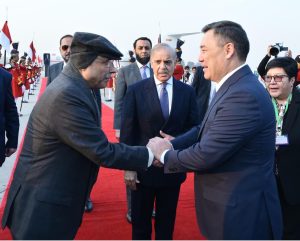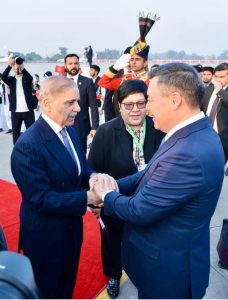FAISALABAD, Dec 03 (APP): The University of Faisalabad (TUF) has marked the International Day of Persons with Disabilities with a dignified and purpose-driven ceremony which sent a powerful message of courage, self-belief and inclusion to students, as persons with disabilities from diverse walks of life shared their remarkable journeys of struggle and success.
Department of Rehabilitation Sciences in collaboration with Departments of Occupational Therapy and Speech & Language Therapy organized the event.
Chairperson Institute for Rehabilitation of the Disabled Mrs. Rubina Imtiaz attended the ceremony as chief guest while special guests included the individuals who have transformed physical challenges into life-defining achievements through sheer determination and perseverance.
A keynote speaker Dr. Anwar Ali who despite being visually impaired completed his PhD pursued a successful teaching career and represented Pakistan as an international blind cricket player, earning several accolades for the country.
International wheelchair handball player Yasir Naveed, who lost a leg yet rose to compete globally for Pakistan, also inspired the audience with his story of discipline and resilience.
Mueez Shaukat, who was born with a physical disability and later founded Humanets and counselling Services after attaining higher education, shared how purpose and persistence can reshape destiny.
The speakers candidly narrated their life experiences, hardships and triumphs, urging students never to lose hope in the face of adversity.
They emphasized that every human being possesses unique potential which, if provided with opportunity and encouragement, can create meaningful change.
They highlighted that persons with disabilities do not seek sympathy but rather positive attitudes, motivation and equal opportunities to prove their capabilities in every field.
Addressing the ceremony, chief guest Mrs. Rubina Imtiaz appreciated the university management, particularly the Department of Rehabilitation Sciences, for organizing a meaningful and socially impactful event.
She said that such programs play a vital role not only in the personality development of students but also in strengthening social awareness, harmony and inclusivity.
Head of Department of Rehabilitation Sciences Dr. Maryam Zafar reaffirmed her department’s commitment to continue taking practical steps for the encouragement, empowerment and rehabilitation of persons with disabilities.
She said that the core objective of the program was to create awareness among youth, highlight the rights and abilities of persons with disabilities, and promote the message of inclusion, tolerance and equality in society.
Later, the special guests were presented with tributes and tokens of appreciation in recognition of their extraordinary services and inspirational contributions.















